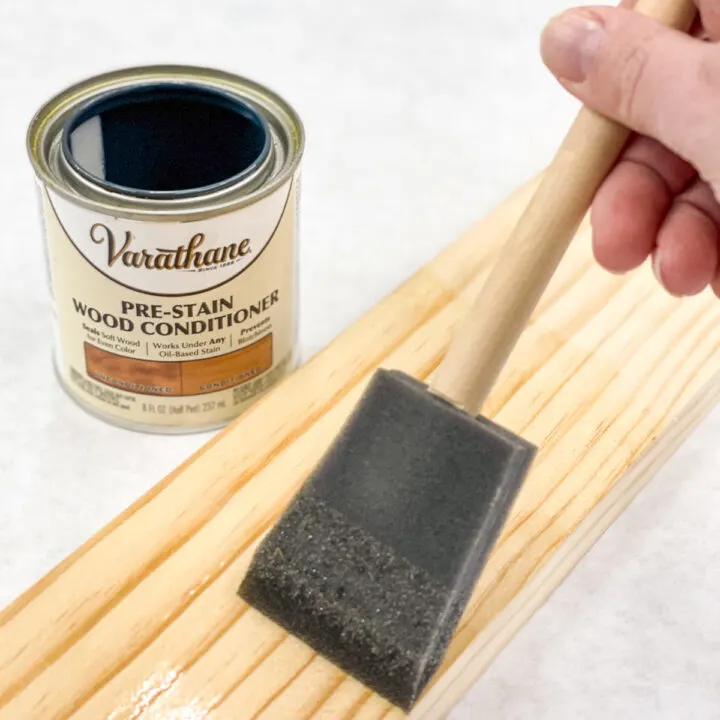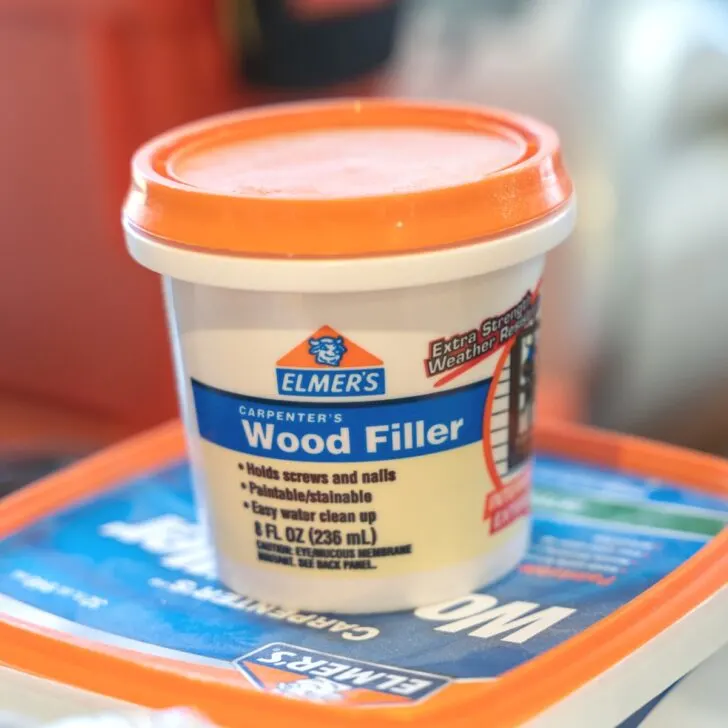What's the best wood glue for your project? Find out the difference between various types of wood glue and how to use them in this article!

Overwhelmed by all the options in the glue section of the home improvement store? Choosing the right wood glue and knowing how to use it properly can make or break your project.
In this article, I'll go over the best wood glues for DIY projects and woodworking, so you can confidently choose the right one for your application.
The best wood glue is the one that is best suited for your specific project. Are you looking for something that's water resistant for outdoor furniture? Or maybe you're tackling an antique furniture repair project that needs quick dry time?
This list will go over the pros and cons of each type of wood glue so you can make the right decision.
PVA Wood Glue
PVA stands for polyvinyl acetate, and is commonly called carpenter's glue. This is what most people think of when you refer to wood glue. All of my woodworking plans remind you to apply wood glue when screwing two boards together, and this is the glue I'm talking about.

It's pretty cheap, holds well, and it's easy to clean up. If you need to stick two boards together, then PVA glue will do the job!
PVA glues are stronger than the actual wood fibers. When you try to break apart two glued boards, it's the wood that breaks, not the glued joint! The video below compares various formulas to see which one is stronger.
When choosing a PVA wood glue, you should consider two things. First, how long you think it will take to get the joint clamped up after the glue is applied. Second, whether your project will be for indoor or outdoor use.
Open time
The open time, or working time, refers to the amount of time it takes for the bonding agents in the glue to start firming up. For example, Titebond Original wood glue starts "sticking" in five minutes, but Titebond III gives you more than 10 minutes of open time.
For a quick project, any PVA glue is fine. But for more complicated glue ups where you're joining together multiple parts at once, you want the longest open time. This will allow you to get everything aligned correctly and in the clamps before the glue kicks in.
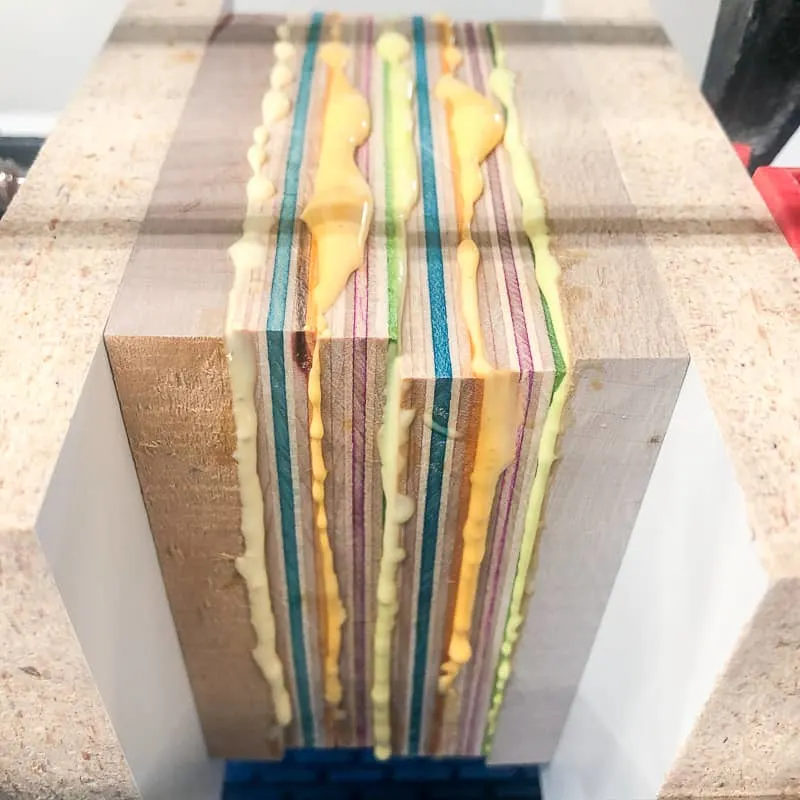
Water resistance
For indoor projects that will not come into any contact with moisture, any PVA glue will do. But if you're making cutting boards or fixing outdoor furniture, you need to make sure the glue won't dissolve in water. Both Gorilla Glue Ultimate and Titebond III are waterproof and can be used outdoors.
Best wood glue
I've found that Titebond III is the best wood glue overall for woodworking projects. I buy large quart size containers and pour them into a smaller Glu-bot or glue roller bottle for easier application.
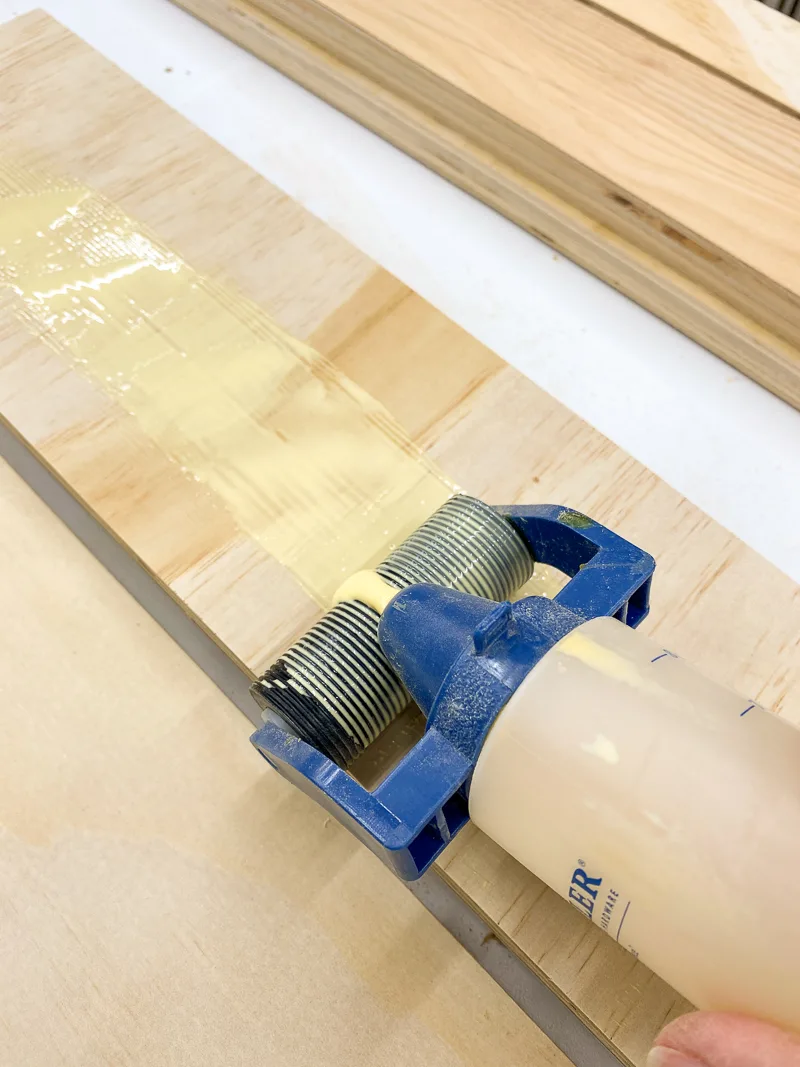
The extra long open time means the glue dries a little slower, but I have plenty of time to make adjustments. It works for both indoor and outdoor applications, so I can keep one large bottle on hand for all my projects.
Polyurethane Glues
Polyurethane wood glue, such as Gorilla glue, is a little different than PVA. It's water activated, so you have to mist a dry surface before applying. For this reason, it's a good choice if you're working in high humidity or with damp wood.

One thing about polyurethane glue - it can foam and expand quite a bit! The wood doesn’t absorb it, so it can literally push your joint out of alignment if it's not clamped together securely.
Gorilla glue is incredibly strong, and it works great for bonding wood to other materials. It's also waterproof, so you can use it outdoors. However, due to its unpredictable nature, I don't use it very often in my projects.
Epoxy Glues
Epoxy isn't just a wood adhesive, but it can be used for woodworking projects. It's super strong, and can be used to bond two different materials together, such as wood to metal, plastic or glass. It also works great for filling gaps, since it won't be absorbed into the wood like PVA glue.
But it's pretty expensive, and you need to buy it in two parts - resin and hardener. After mixing the two parts, it causes a chemical reaction that sticks the two surfaces together.

For smaller applications, a syringe of five minute epoxy might be all you need. It keeps the two parts separate until they mix in the nozzle or in a cup. You only have five minutes to work until the epoxy glue sets up, so only mix it when you're ready to apply.
For larger projects like a river table, you might need gallons of epoxy resin! Adding pigments to the mix can create different colors and effects. One of my favorite YouTubers makes gorgeous tables out of huge wood slabs and epoxy, and you can see how he calculates the volume required in the video below.
It's important to check the label to see how deep of a pour you can make at once, because the two chemicals create heat when combined. Too much heat can cause it to bubble and burn your project!
Check out this article for a more in-depth comparison of epoxy vs wood glue!
Hide Wood Glue
Hide glue was the original wood glue that has been used for centuries. It's called hide glue because it's made from animal collagen. It's not widely used today; however, traditional woodworkers might opt to use it. You can read a more detailed comparison of hide glue vs wood glue here.

One thing about hide glue - you can reverse the bond by using heat. So, if you build something that you may want to take apart later, all you would need to do is apply heat with an iron!
Nowadays, you'll mostly use hide glue to repair antique furniture or to make musical instruments. It can also be used as a decorative finish, because it creates a crackled effect that can make a piece look weathered.
Cyanoacrylate or CA Glue
CA glue, also known as super glue, is a great glue for woodworkers. Starbond is my preferred brand, and they have a ton of different formulations for every situation! The thin version is great for getting into tiny cracks, and the thick is perfect for filling larger gaps. They even have black or brown tinted ones to match your wood!

Basically, think about CA glue as the Band-Aid for your projects. What do I mean? Say you chip out the end of a board and the splinter is still hanging on. Don't panic!
Just apply some CA glue and stick it back in place. With a quick spray of CA glue accelerator, the glue dries instantly and you can go on with your project like nothing ever happened.
You can also use CA glue to stabilize loose knots or fill hairline gaps on a project before finishing. Sometimes I use it instead of wood putty or wood filler because it dries fast and doesn't make a mess when you sand it flush.
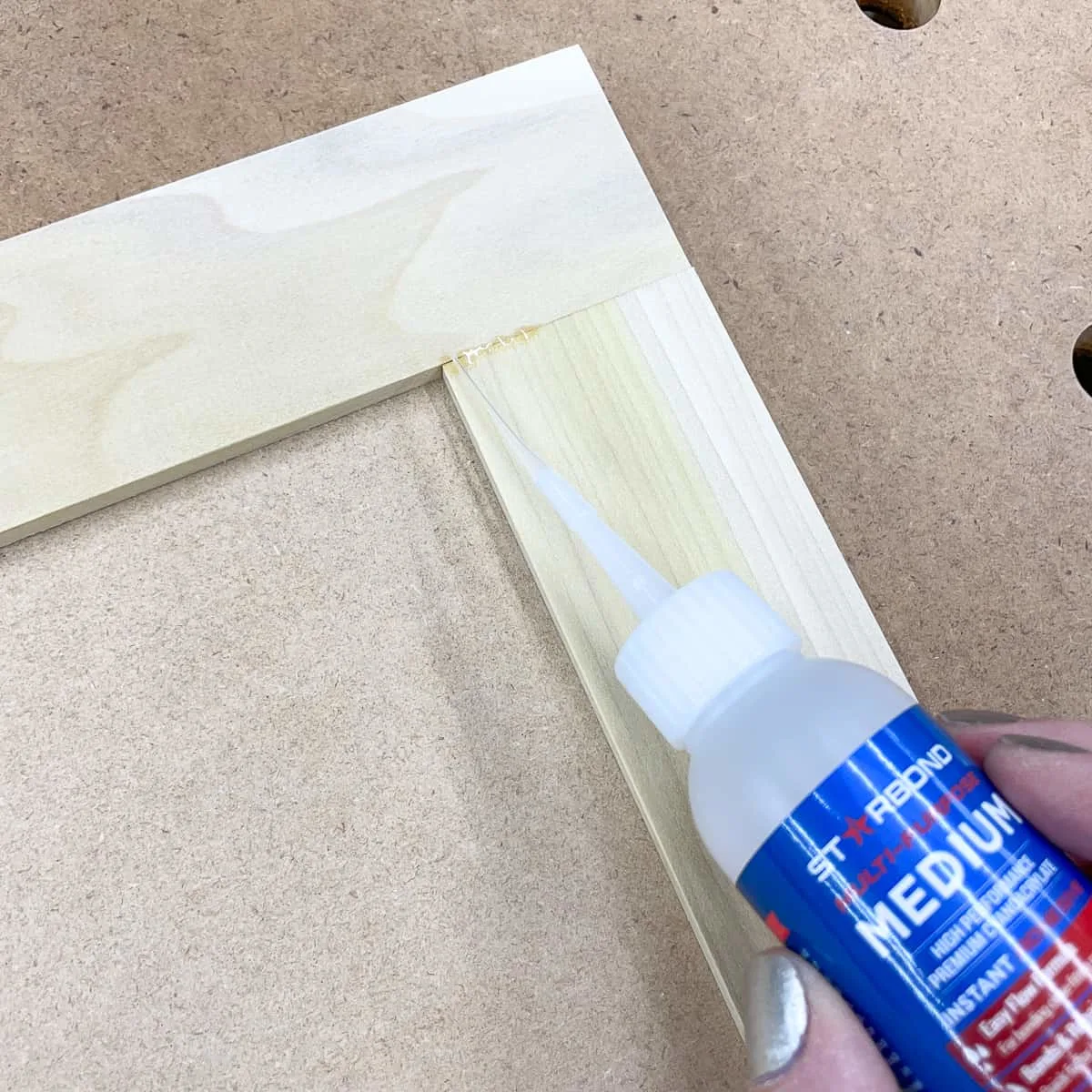
CA glue isn't very strong, so it shouldn't be used for an entire project. But for small applications or a quick repair, it works great! One thing to keep in mind - it can fuse your skin together, so be careful and wear gloves if needed!
Contact Cement
Contact cement isn't the best for everyday woodworking. However, there are a few times to use it. For instance, you might use contact cement when you're installing a laminate sheet on a wood substrate or veneer to the side of a cabinet.
It bonds to itself, so you have to apply it to both surfaces and allow it to dry. Once the two sides touch, they form a permanent bond, so make sure everything is aligned correctly beforehand! The video below goes into more detail how to use it.
Hot Melt Glue
The hot melt glue isn't a great choice for woodworking, especially when you need something structural. However, hot glue works fast, so if you need to hold something together temporarily, it can do the job!
Hot melt glue is best used for jigs or for holding two pieces together while you bore holes in both simultaneously. It can be easily pried apart after your task is complete, and won't harm the wood surface.
Tips and Tricks for Using Wood Glue
Wood glue can be tricky stuff. Unlike screws, you can't just take it apart if you make a mistake (unless you're using hide glue!) With that in mind, here are a few tips to get the best results.
- Keep the wood clean and dry. You don't want to glue together dirty wood. Make sure there is no sawdust or moisture on the wood.
- Use a glue brush for more control. Wood glue can prevent finishes from absorbing properly. A silicone glue brush makes it easier to prevent a mess all over your project. You don't even have to wash the brush afterwards! Just let the glue dry, then peel it off in one big clump. It's strangely satisfying!
- Use clamps, but not too much pressure! Clamps are a great idea and even essential when gluing two boards together. However, use just enough pressure to force the wood together. Too much pressure, and you'll warp your boards or dent the corners. You could also squeeze all the glue out of the joint!
- Use a brad nailer as a clamp. For some projects, you can use a brad nailer or pin nailer to hold everything in place. This ensures that the boards don't slip out of alignment, and you can continue to work on your project while the glue dries.
- Beware of the weather. Most wood glue will dry faster in warm, dry conditions. The opposite is also true - it will take longer in high humidity or colder temperatures. Keep this in mind when you think about how long to keep a piece in clamps.
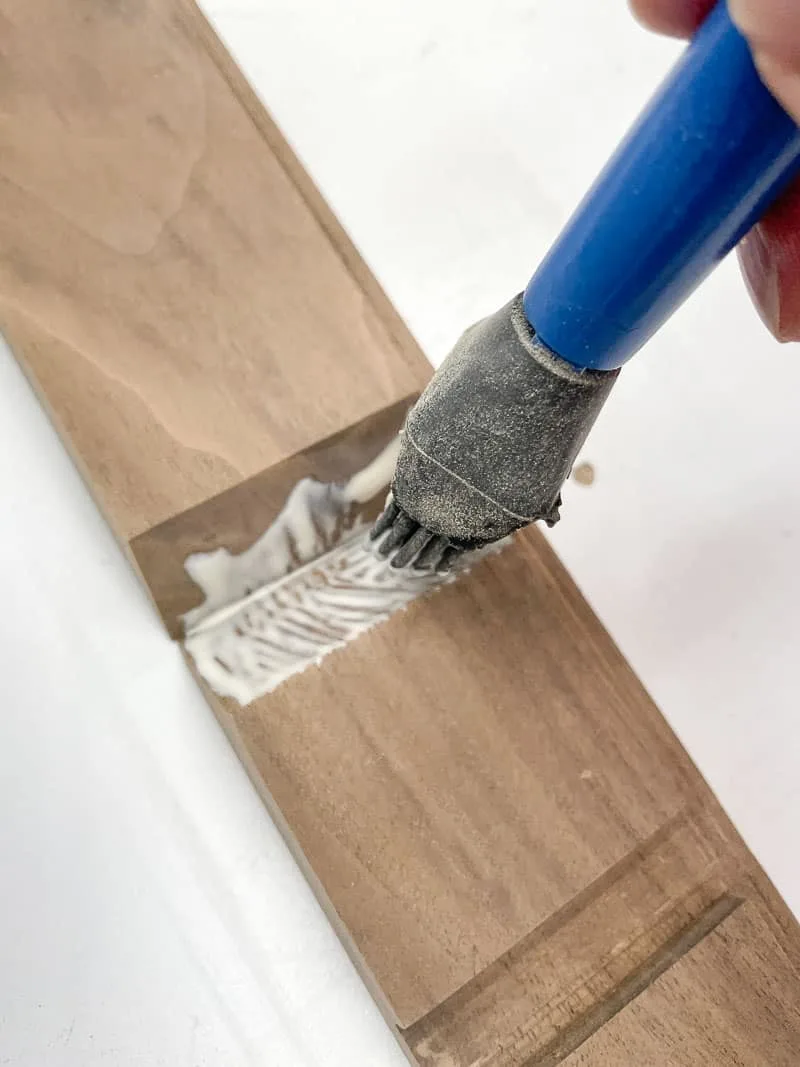
Of course, the best way to make sure you have a good experience with wood glue is to read the manufacturer's guidelines and to test things first.
Frequently Asked Questions about Wood Glue
How long does it take for wood glue to dry?
The dry time depends on the type of wood glue you're using. Regular PVA wood glue can dry in as little as 30 minutes, but that doesn't mean that it's ready to use. Allow 24 hours for wood glue to fully cure for the strongest bond.
Can I use white glue instead of wood glue?
Yes, regular white glue such as Elmer's glue can work on wood. White glue is a PVA glue just like wood glue, which has added resins and other components to make it easier to sand. It won't be quite as strong as wood glue, but it will work in a pinch!
As you think about different types of wood glue, do yourself a favor and practice on scrap wood first. Get a feel for how they dry, what they look like, and how easy they are to use.
A little practice will ensure you're ready when you need to glue up that big project!


